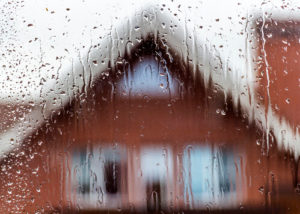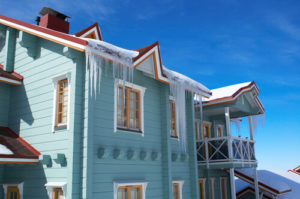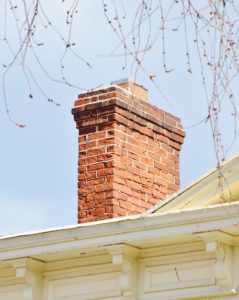The Importance of Good Chimney Flashing
Water can be a serious problem for your chimney system, and as such, many parts of the chimney system are specifically designed to prevent water infiltration. If these parts are damaged, installed incorrectly, or missing, it WILL result in a chimney leak. Chimney professionals are so sure about this that most will check the chimney first, no matter where the leak occurs in the house. At Chief Chimney Services, if there is evidence of a chimney leak, we will check the flashing first.
Flashing
Flashing is the shiny metal you may see along the intersection of the chimney and roof. It is composed of many overlapping layers of thin metal and protects against water by directing it away from the chimney/roof intersection. The flashing should be professionally installed because it is a tedious job that only an experienced professional can understand or do properly. The flashing should be placed according to the roof slant and material, as well as hide any nails that are used during installation. Additionally, high-quality flashing will not require sealant of any kind and will lay flat against both the roof and the chimney. If the flashing is improperly installed, it can let water seep directly into the chimney and home, can be easily affected or shifted by winds and animals and may cost dearly in the long run.
Flashing Damage
When a chimney leak is caused by faulty flashing, there are a few reasons this can occur:
- Improper installation. It may not seem like a big deal, but improper installation can lead to serious issues with your chimney system. Do not allow an amateur to install your flashing. Instead, hire a licensed, certified, and experienced chimney sweep company for all of your installations and services.
- Animal tampering. Animals may scratch at your flashing, causing it to bend or shift. Once flashing is moved or separated at all from the installation point, it will continue to shift until it leaves the entire space vulnerable.
- Strong winds and storms. Even properly installed flashing may shift due to high winds, especially during a storm. Extreme winds can blow your entire flashing from your roof if the conditions are right. Again, this leaves the entire area vulnerable.
- House shifting/settling. Over time, structures shift and settle. This can cause flashing to separate from the roof even when it’s installed correctly. This settlement can occur over long periods of time, or quickly due to earthquakes. If your home experiences an earthquake or similar occurrences such as a tornado or hurricane, you should schedule an inspection to ensure all the parts of your system are working together to protect the system.
Preventing Water Damage with Flashing
While the chimney cap is the chimney’s first defense against water damage, the flashing is the last. Even when the cap and crown are in place and in good shape, if the flashing is faulty, there will be a leak. Many homeowners won’t notice a leak until it has already caused extensive damage behind the scenes.
Don’t hesitate. Spring is coming, and with it will come April showers that can lead to May chimney repairs if you can’t count on your flashing. Make an appointment with Chief Chimney Services today and get your flashing checked out before spring.
Ask about our other waterproofing services as well.



